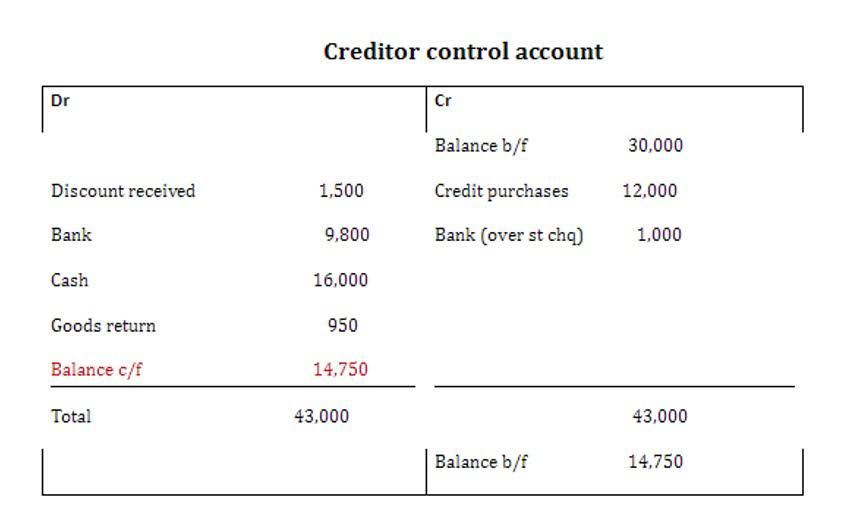IoT Agricultural Sensors & Smart Farming Tracking
2 de septiembre de 2020Look for sellers with positive reviews and a track record of
23 de septiembre de 2020Content

Record all types of compensation — salaries, hourly wages, and bonuses — in the period your employees earned them. A third journal entry records the payment of the total net pay and the related reduction of cash. A fourth entry records payment of payroll liabilities and related reduction of cash. In accrual accounting, you use an adjusting entry to record expenses that you incurred during the period but haven’t paid for yet. Keep in mind that accruing payroll is only necessary for businesses that use accrual accounting. If you use cash-basis accounting, you only record expenses when you pay for them, so there’s no need to accrue them.

The accounting term “accrued wages” describes the unpaid compensation not yet paid by a company to employees for the services they have already provided. There are ways to improve efficiency in your payroll accounting function. Automating mundane tasks provides more accuracy and leads to less time spent recording payroll. The first way to automate payroll accounting is to connect your payroll system with your accounting software if they are separate. Some accounting software programs have built-in payroll processing features that eliminate the need for this step. After you process your payroll, you will want to gather reports for that pay period.
What are Payroll Expenses?
There are six different levels of detail in which you can print your journal entries. Level 6 will show the most detail, and level 1 will show the least amount of detail. You can change the detail level for all object accounts or for a specific object account and you can rerun your journal entries over as many times as you wish. During the payroll cycle, the system creates a journal entry of every calculation for every employee. Each journal entry is assigned a Document Type, Journal Type, and a G/L Date. Nanonets accounting automation software can automate manual processes like reimbursements, data entry, general ledger coding, payment reconciliation, and more.
Working this step into your monthly reconciliations allows you to make necessary adjustments before the books are closed. Payroll deductions can become complex, with some being pre-tax and a few remaining post-tax. Pre-tax deductions must be subtracted from gross pay before any taxes are calculated, while post-tax deductions are taken from the after-tax income. Miscalculating these items can lead to overstating or understating benefit payments, with the cost of errors falling on the employer. There are many ways to determine how much a payroll expense
accrual should amount to, but the result should be approximately the same.
Salaries and wages
This journal entry recognizes the wages expense incurred during the accounting period and records the obligation to pay the accrued payroll on the next payday, January 7th. To prevent these expenses from being "double counted" when the Feb 6 payroll is recorded, we have reversed the accrual as of Feb 1. In addition to improving budgeting https://www.bookstime.com/articles/accrue-payroll and financial planning, payroll accrual can be used to reduce errors in payroll. In order to calculate accrued payroll, payroll expenses are determined in advance, which includes the calculation of salaries, wages, taxes and more. Making these calculations upfront instead of last minute makes payroll errors less likely.

When an accountant records accrued salaries and salary expenses into a general ledger, this is called a journal entry. Payroll entries are made via journal entries that record the wages of employees. These journal entries are recorded on the general ledger and document payroll transactions. Record employer-paid payroll taxes, such as the employer’s portion of FICA, FUTA, and SUTA. As I mentioned, I don’t owe FUTA and SUTA on Susie’s wages since I’m accruing payroll at the end of the year, after she’s earned more than $7,000 for the year.
Why is payroll accrual important?
This is common when there is a difference between the calendar month end and the routine payroll schedule. When this occurs, the entry will be a debit to payroll expense (since the employee worked) and a credit to accrued payroll. The Accrual Factor allows you to post a certain percentage of your expenses back to the first fiscal period of the payroll. The system creates all the journal entries is normally would and posts them to the later fiscal period, in this example, May.
These amounts are in addition to the amounts withheld from employees’ paychecks. The credit to FICA Taxes Payable is equal to the amount withheld from the employees’ paychecks. The company can credit both its own and the employees’ FICA taxes to the same liability account since both are payable at the same time to the same agency. When these liabilities are paid, the employer debits each of the liability accounts and credits Cash. 4 reflects the actual payroll entries to be paid on April 29, 2016, but which are accrued on April 22, 2016.
What Is GAAP Accounting?
Hiring your first employee is an exciting step in growing your business; however, there are new challenges that you will need to overcome. Implementing the necessary procedures to maintain records and promote accuracy within your payroll function relies on creating an effective payroll accounting system. Compare the amounts you entered to the information you have in your payroll reports. If your books don’t balance, retrace your steps to find your accounting mistake and fix it. Initial recordings, also known as the originating entry, are the primary entries for payroll accounting. Here you read what accrued payroll is, how it is calculated and why every business should keep an eye on its payroll accrual.
- Book a call with our team today to see how you can reduce employee efforts and make your accounting processes seamless.
- He’s paid once a month (payday comes on the last workday of the month) and works 40 hours per week, five days a week.
- All accrued expenses are liabilities on your balance sheet until they’re paid.
- Accrued expenses are recorded by debiting the appropriate expense account and crediting the accrued expenses account.
- With every payroll accrual, update how much your employee earned in vacation and sick time.
- This is especially true in workplaces where employees accrue PTO each month.
- As a business owner, you use payroll journal entries to record payroll expenses in your books.
There is no impact to the income statement when the payroll accrual is reversed. There may be an accrued wages entry that is recorded at the end of each accounting period, and which is intended to record the amount of wages owed to employees but not yet paid. This entry is then reversed in the following accounting period, so that the initial recordation entry can take its place. Payroll journal entries are used to record the compensation paid to employees. These entries are then incorporated into an entity’s financial statements through the general ledger. Sometimes yes, accrued liabilities are current liabilities if the expense is due within a tax year.
2.3 What Is the General Ledger Account Structure?
From this session, we know that accrued expenses is recorded as a liability and we also know it has an adjusting entry when the debt has been paid. However, as a liability what would an accrued expense journal entry be? Is it a debit or credit entry, being that it represents a company’s obligation to make future cash payments?
After you pay the wages, reverse the entries in your ledger to account for the payment. With every month they work for you, your employees earn a certain amount of paid time off, for example 2 days for each month worked. Keeping track of payroll entries, credits, and debits for every employee in your organization as well as the many other expenses you face leaves room for error. If something goes wrong, adjusting entries can become a huge chore—you’ll have to dig through potentially hundreds of records.
What Is the Journal Entry for Direct Labor?
The final stage of payroll accounting is to complete the payroll reconciliation. This step ensures that your payroll accounts tie to the general ledger. Furthermore, payroll reconciliations also help you stay on track with a budget. Most companies take advantage of a monthly payroll reconciliation.
You’ll notice I’m not accruing anything for FUTA and SUTA, two employer-paid payroll taxes. That’s because both taxes usually fizzle out early in the year for full-time employees. FUTA only applies to the first $7,000 of an employee’s wages, resetting every January.
General Entry for Payroll Tax Deductions
Prior period entries are made to the last day of the prior accounting period. According to these rules, we record equity, liabilities, and revenue accounts as credit entries. This means that the journal entry of liabilities like accrued expenses will be a credit entry. An accrued expenses journal entry has to do with accrual accounting which is built on a timing and matching principle.
What is the journal entry for accrued payroll?
Accrued Wages Journal Entry: Debit and Credit Entry
The initial journal entry of an accrued wage is a “debit” to the employee payroll account, with the coinciding adjustment being a “credit” entry to the accrued wages account. For example, suppose the accrued wages at the end of a month is $20,000.
This entry shows a debit to Wages Expense as the total gross wages. After entering the overall wage expense, you then record each type of withholding as a credit to a payable account. Subtracting the withholding amounts from the gross wage results in the final line which will show the net wages payable to the employees. In the subsequent month when the employee is paid, the debit is to accrued payroll and a credit to cash (since there is a cash outflow to pay the employee).
